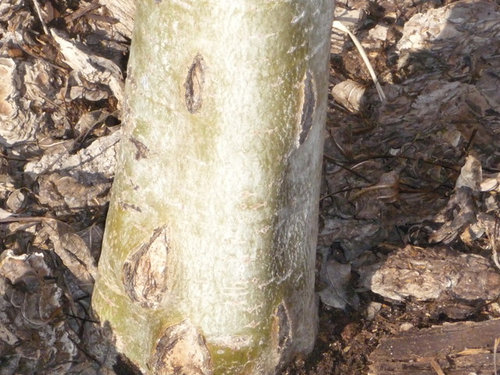Whats wrong with this tree trunk?
campv 8b AZ
11 years ago
Related Stories

GARDENING GUIDESWhat's Wrong With My Plant? Leaves Often Hold the Clues
Learn how to identify common plant ailments by reading their leaves
Full Story
DECORATING GUIDESBring Nature Indoors With Tree Stumps, Trunks and Logs
Furniture formed from wood in its natural state adds earthy elegance to any room
Full Story
GARDENING GUIDESTree Care: Common Tree Diseases and What to Do About Them
Learn to recognize trees that may be affected by diseases or pests so you can quickly take action
Full Story
LIFEYou Said It: ‘Every Room Should Have the Right Wrong Thing’ and More
This week on Houzz we were inspired to break out of catalog styling ruts and let our design freak flags fly
Full Story
LIFEYou Said It: ‘The Wrong Sink Can Make You Hate Your Kitchen’
Design advice, inspiration and observations that struck a chord this week
Full Story
GARDENING GUIDESGreat Design Tree: Australian Tea Tree
A living sculpture with an unmistakable appearance, this coastal native creates an intriguing landscape scene
Full Story
WORKING WITH PROSWhat Do Landscape Architects Do?
There are many misconceptions about what landscape architects do. Learn what they bring to a project
Full Story
GARDENING GUIDESWhat’s in a Name? See 6 Wildflowers That Aren’t ‘Weeds’ at All
Dispel the stereotypes of weeds and try these wildlife-supporting native wildflowers in your garden
Full Story

GARDENING GUIDESHouzz Call: What’s Your Favorite Backyard Beauty?
The simple, honest daisy is this writer’s go-to garden flower. We want to hear which plant, flowering or otherwise, gives you special joy
Full StoryMore Discussions








ken_adrian Adrian MI cold Z5
campv 8b AZOriginal Author
Related Professionals
Reading Landscape Architects & Landscape Designers · Beavercreek Landscape Architects & Landscape Designers · Elgin Landscape Contractors · Arden-Arcade Landscape Contractors · St. Louis Landscape Contractors · Amesbury Siding & Exteriors · Chesterfield Siding & Exteriors · Loveland Siding & Exteriors · Mitchellville Siding & Exteriors · Shorewood Decks, Patios & Outdoor Enclosures · Arbutus Decks, Patios & Outdoor Enclosures · Lauderdale Lakes Decks, Patios & Outdoor Enclosures · Mobile Decks, Patios & Outdoor Enclosures · Montgomery County Decks, Patios & Outdoor Enclosures · Prescott Decks, Patios & Outdoor Enclosurescampv 8b AZOriginal Author
campv 8b AZOriginal Author
j0nd03
brandon7 TN_zone7
WxDano
tsugajunkie z5 SE WI ♱
Beeone
WxDano
ken_adrian Adrian MI cold Z5
campv 8b AZOriginal Author
WxDano
Tn_Tree_Man
campv 8b AZOriginal Author
Beeone
ken_adrian Adrian MI cold Z5
campv 8b AZOriginal Author
Tn_Tree_Man
campv 8b AZOriginal Author
famartin
mikebotann
famartin
ken_adrian Adrian MI cold Z5
salicaceae
mikebotann
campv 8b AZOriginal Author
famartin
campv 8b AZOriginal Author
famartin
campv 8b AZOriginal Author
campv 8b AZOriginal Author
famartin
campv 8b AZOriginal Author
salicaceae